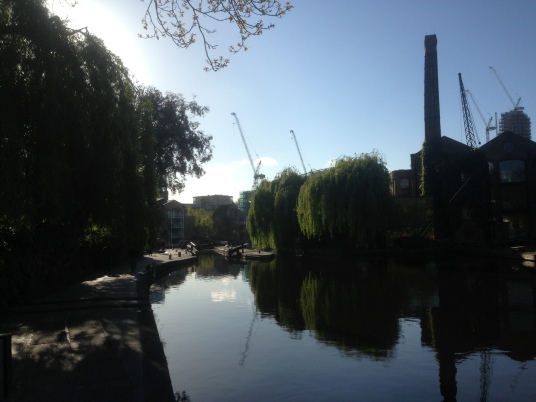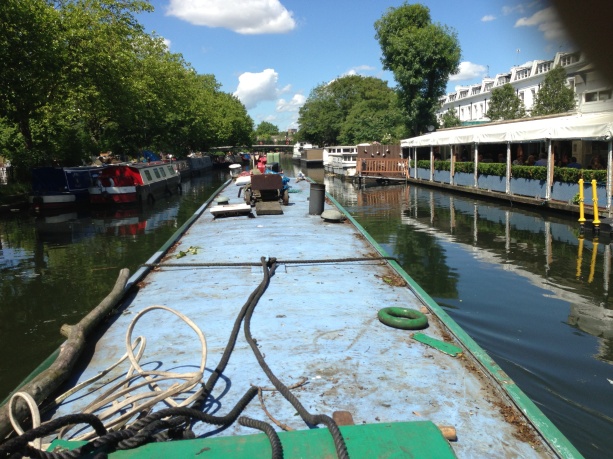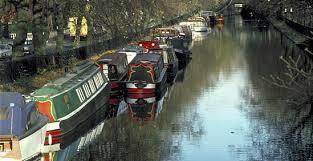London National Bargee Travellers Association
FACT AND ADVICE SHEET REGARDING ENFORCEMENT
Canal and River Trust enforcement powers
Currently the 14 day limit in the 1995 British Waterways Act should be the legal underpinning of any enforcement that CRT takes against boats without a home mooring. The main legal powers available to CRT amount to Section 17 (ii) of the BW Act, which states that CRT must license boaters with no home mooring as long as they use it “bona fide for navigation (for the period of the license) without remaining continuously in any one place for more than 14 days or such longer period as is reasonable in the circumstances.” In other words, boats without a home mooring have to move to a new place at least every 14 days.
How this works in practice is that CRT have the power to reasonably interpret the legislation and enforce boats that they consider to have broken it. At the end of the process CRT can apply to the County Courts for ratification – or permission – to use their section 8 powers to remove the boat from the waterways.
The enforcement process involves several stages and it is advisable to not ignore letters or emails and to try to negotiate with CRT to be removed from the process. The London NBTA can give further advice on this and there is special protection for livaboards, disabled, elderly and pregnant women. If court action is threatened, the London NBTA can assist the boater with finding proper legal representation.
The ‘new enforcement policy’ and non-renewal of licenses
https://canalrivertrust.org.uk/news-and-views/news/policy-outlined-for-boaters-without-a-home-mooring
The new enforcement policy circumvents the above process by using non-license renewal as an enforcement tool.The policy is new, appears to have administration glitches and teething problems, but is best encapsulated in the letter that was sent by CRT to all boaters without a home mooring that states:
“From 1 May 2015, when the licence for a boat that doesn’t have a home mooring comes up for renewal, we’ll look back at its cruising pattern to determine whether it’s appropriate to re-licence the boat again as a continuous cruiser.
If, at the time of renewal, we’re generally happy with a boat’s cruising pattern over the course of the previous licence period, then we’ll issue another continuous cruiser licence straight away. Of course, if during the period of the new licence we become concerned about the boat’s cruising pattern then we’ll let the boater know.
If we’ve any concerns about a boater’s past cruising pattern, we will get in touch about six weeks before the licence renewal date, to let them know which of the following two categories applies and what they need to do:
Category one
Boats that have hardly moved during their licence period won’t have their continuous cruiser licence renewed.
For the first few months after 1 May 2015, while boaters are getting used to this new approach, we’ll give those in this category another chance to establish an acceptable cruising pattern by issuing a three-month licence. If, after this three-month period, they still haven’t moved far enough then they’ll have to secure a home mooring before getting a new licence.
Category two
If a boat has been moving, but not enough to fully meet the requirements of our Guidance, we’ll only issue a six-month licence as a continuous cruiser. This will give the boater the chance to establish an acceptable cruising pattern. If, after this six-month period, they’ve still not changed their cruising pattern then they’ll have to secure a home mooring before getting a new licence.”
A frequently asked question
How far is “far enough”.
CRT refers boaters to their guidance for boats without a home mooring. Some boating organisations believe that this guidance is potentially unlawful because it appears to state that there is a minimum distance requirement, something that is not set in the legislation or subsequent case law (County Courts do not set precedent and the original intention was that the judge would determine ‘bona fide navigation’ from ‘place to place’ taking into account the context of the particular case in front of him/her). However, this distance requirement would need to be challenged in court, so for all practical purposes CRT appears to be enforcing on this:
“ (..) we can advise that it is very unlikely that someone would be able to satisfy us that they have been genuinely cruising if their range of movement is less than 15-20 miles over the period of their licence. In most cases we would expect it to be greater than this.”
https://canalrivertrust.org.uk/boating/licensing/enforcement/boaters-without-a-home-mooring-how-far-is-far-enough
It is important to note that CRT are clearly saying that 15-20 miles is not enough. That 15-20 miles range is NOT enough has been underlined by two recent public statements by CEO Richard Parry. The first was given in an article to the Financial Times (26/02/2015) in which Parry states:
“We welcome continuous cruisers, many of whom have a fantastic lifestyle travelling around the country. We don’t want evictions to happen, but in extreme cases if someone stubbornly refuses to comply (…)”
http://www.ft.com/cms/s/0/40ae3218-bd8c-11e4-9d09-00144feab7de.html#axzz3VEjgkawf
The second was given in an article in City Metric in which Parry states:
“I’m telling you that we believe, clearly, that it has to be more than 15 to 20 miles,” Parry has said. “How much more we’ll be debating forever.”
http://www.citymetric.com/horizons/more-and-more-londoners-are-living-boats-their-lifestyle-under-threat-new-regulations-853
What do I do about all this?
- For a start it’s important to keep records and dates of your movements. This isn’t strictly required by law, but as CRT data of your boats movements may be unreliable, it is probably a good idea.
- Move to a new place every 14 days unless there are good reasons not to – such as ill health or mechanical breakdown – and inform CRT’s local enforcement manager by phone and follow up email o0f your intention to stay longer.
- Obtain a copy of CRT’s sighting data on the movement of your boat and challenge it if it is wrong. It would be a good idea to do this two or three months before your licence is due to be renewed. Contact 0303 040 4040 or Sarina.young@canalrivertrust.org.uk
- If CRT contacts you and tells you they are only going to offer you a new licence with a reduced term of six or three months then challenge this. Reply to the letter by email to the address given on it. Be firm and polite and provide details of your cruising pattern and state that you believe this to be within the law. Ask for your CRT sighting data if you haven’t already got it. Ask why they have refused to renew a full license. State that you if you do not receive a satisfactory answer will be raising this as a formal complaint. If the reason is already given as ‘not moving far enough’, then ask how far they consider being far enough.
- CTR may also offer to give you ‘guidance’ on an individual cruising pattern. If this guidance is reasonable and you believe that you will be able to comply with it then it is your decision whether to accept this.
- If you do not accept CRT’s decision not to renew your licence for a full 12 month term because you believe that their interpretation that your cruising pattern over the course of the last year as not bona fide is unfair, or if CRT will not negotiate and are threatening to not renew your licence and you wish to continue living on your boat on CRT managed waterways, then you need to seek legal advice. London NBTA and the National NBTA can give you the contacts for a free legal advice line run by solicitors experienced in Canal and River law and section 8 cases in particular.
- You can also raise the decision as a formal complaint and have it reviewed. To do this follow the step by step guide given in this link: https://canalrivertrust.org.uk/contact-us/making-a-complaint
What happens if my licence is not renewed?
CRT will ask you to remove your boat from the water. Seek legal advice as above because if you live on a boat on the canal that is unlicensed, CRT will summon you to a County Court and ask the judge for permission to remove your boat from their waters. You may be liable for costs if permission is granted. Seek legal advice if you intend to go to court. In court you can challenge CRT’s decision not to renew your licence.



